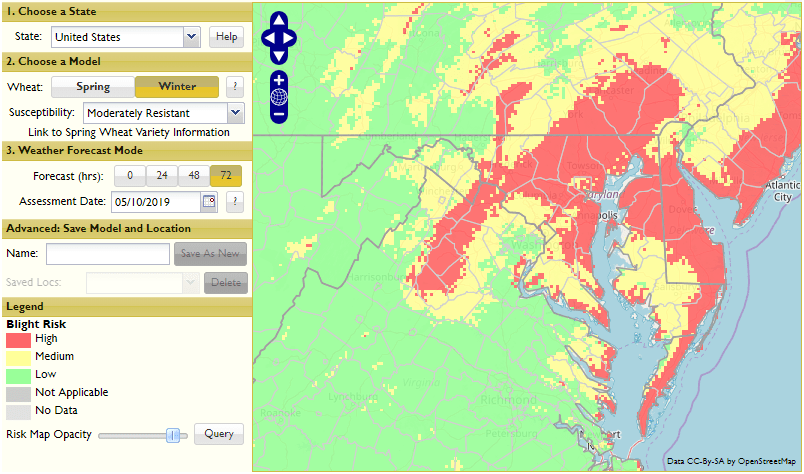
Wheat in the Eastern Shore of Maryland is finishing up flowering. The risk
for FHB is high. If you haven’t sprayed and you are still within 4-6 days
of flowering, you can still do so. Wheat in the Northern parts is heading
now and will soon start flowering. The FHB risk for this part of the state
is also predicted to be high, and the farmers should be prepared to spray
fungicides on their wheat when it flowers (50% of the main tillers showing
yellow anthers). The fungicides effective for FHB are Prosaro/ Caramba/
Miravis-Ace. The best stage recommended for spraying fungicides is early
flowering or within 4-5 days of that. These fungicides do not need to be
tank mixed with another product for spraying. The fungicide products should
be applied at the full rate recommended by the manufacturers. Strobilurin
containing fungicides should not be sprayed at this stage. Aerial
application at a rate of 5 gallons per acre or ground application at 15
gallons per acre with 300-350 um droplet size is recommended. Spray nozzles
should be angled at 30°-45° down from horizontal, toward the grain heads,
using forward- and backward mounted nozzles or nozzles with a two
directional spray, such as Twinjet nozzles. There has been no other major
disease being seen anywhere across the state in wheat so far.
–Nidhi Rawat, Small grains Pathologist, University of Maryland
For more details, go to the FHB Risk assessment tool at
http://www.wheatscab.psu.edu
For the latest news and updates from the U.S. Wheat & Barley Scab
Initiative, go to https://www.scabusa.org
